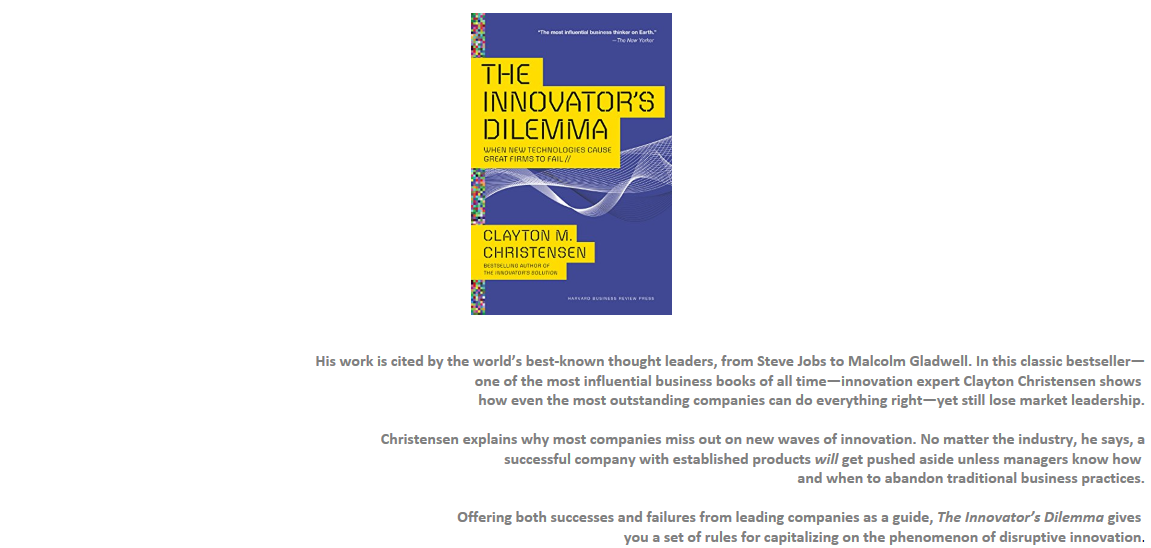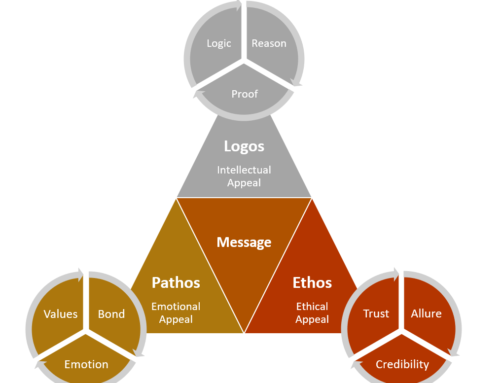
Executives who succeed in large companies who DON’T get wrecked by innovation tend to do so based on these principles
- Resource Dependence: customers control the patterns of resource allocation in well run companies.
- Small markets don’t solve the growth needs of large companies
- The ultimate uses of disruptive technologies are unknowable in the future. Failure is an intrinsic step for success.
- Organizations have capabilities that exist independently of the capabilities of the people who work within them. Their capabilities lie in their processes and values. These also define their disabilities when faced with market disruption.
- Technology supply may not equal market demand. The attributes that make disruptive technology unattractive markets are often the ones that are their greatest value in emerging markets.
Successful managers harness these to their advantage by
- Embedding projects to develop and commercialize disruptive technologies within the organization. Then aligning the right customers who need it with the technology.
- Placed projects within organizations small enough to be excited about small wins.
- They planned to fail early and inexpensively. Used an iterative process of trial – learning – trial again
- Utilized some of the resources of the main organization to address the disruption. But not their processes and values. They created different ways of working within the organization.
- When commercializing disruptive technologies, they found or developed new markets who valued the attributes of the disruptive product. Rather than look for technology that can breakthrough in main stream markets.
Give disruptive technologies to organizations whose customers need them:
- Resource Dependence: Companies’ freedom of action is limited to satisfying the needs of entities outside the firm (customers & investors primarily) that give it the resources it needs to survive. If they don’t find options for these entities, they will starve.
- This requires accepting that managers are powerless to change the courses of their firms against the dictates of their customers. i.e. Henry Ford: If I would have asked my customers what they wanted they would have said faster horses.
- Resource Allocation Process: The process for determining which projects get resources and money. Resource Allocation and Innovation are 2 sides of the same coin. Designed to weed out projects and processes that customers do not want. At “great companies” they MUST invest in things customers want.
- In terms of value and power of decisions made, executives are in control. However, in terms of volume of decisions made, it’s often way less top-down.
- Executives will make decisions based on corp profit and career advancement.
What should managers do when faced with a disruptive technology that customers do not want?
- Convince Everyone in the Firm that the company should pursue it anyways. That it has strategic advantage.
- Picking a fight. Because most people with align with resource dependency.
- Create an independent organization and embed it with the customers who DO need the technology.
- This is harnessing instead of fighting the power.


